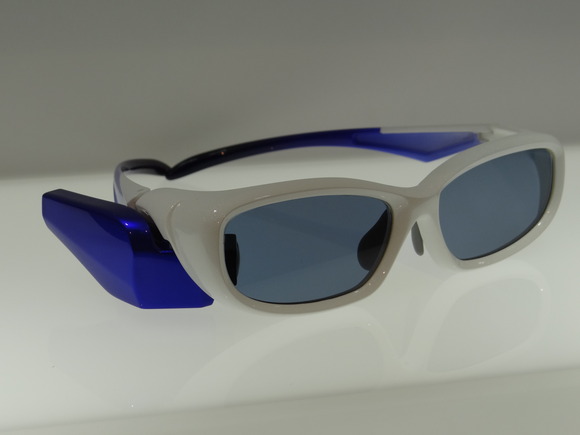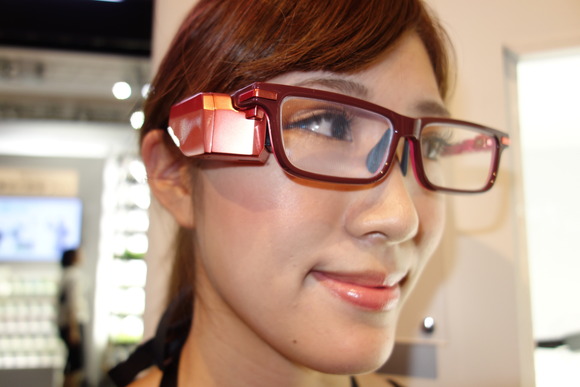Smartglasses – With Ceatec just opening its doors, Toshiba shows its take on the new smartglasses category. The device is called Toshiba Glass but doesn’t look anything like Google Glass.
Several news blogs (PC World, Glass App Source, Network World) are reporting about the device without saying too much. From their combined reporting we get the idea of a relatively light device (42g) that is based on a pico projector. The differentiator seems to be the optical combiner. Instead of a combining prism like in the Google Glass, or a waveguide like in the latest Vuzix design, Toshiba is using micro prisms on the inner surface of the glasses to achieve the augmented reality effect.
The following images show the device.


The design is similar to the Google Glass design as it features only a one sided display, but it has a much larger optical engine that is clipped to the side of one arm. The overall appearance is more like the ORA-S design from Optinvent, but it differs from this approach, as it uses a real optical combiner to overlay the AR information, instead of providing a see-around solution.
While the stated weight makes them as light as the Google Glass device, the Toshiba device is said to not contain any stand alone capability, as the device is linked via cable to the smartphone worn by the user. If this is true, this is a relatively conservative design and consequently Toshiba may sell the glasses at a relatively low price, in order to compete in the market. For comparison, the Moverio BT-200 glasses can be pre-ordered for $700, while Google Glass is selling for $1,500. The Epson model has two displays and also uses a cable connection, while the Google Glass uses a wireless connection and has some standalone features as well.
So far, there is no news on availability or price. However, there is also no official press release from Toshiba, which may add some more detail about these brand new smartglasses.
With other CE manufacturers already looking at this market segment, we may see a few more product announcements soon. If the development of the smartwatch segment is any indication, they will all have two years of uninterrupted market access until Apple may consider entering this market. Until then, we will see many new products arrive and wonder about consumer acceptance. These are good times to be reporting. – Norbert Hildebrand

